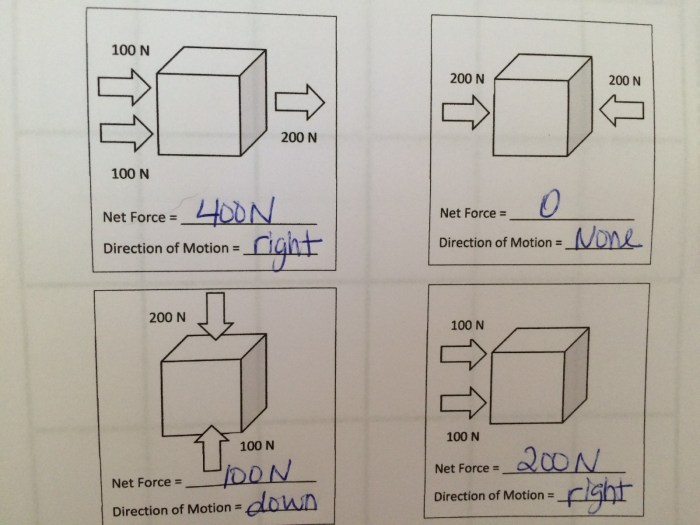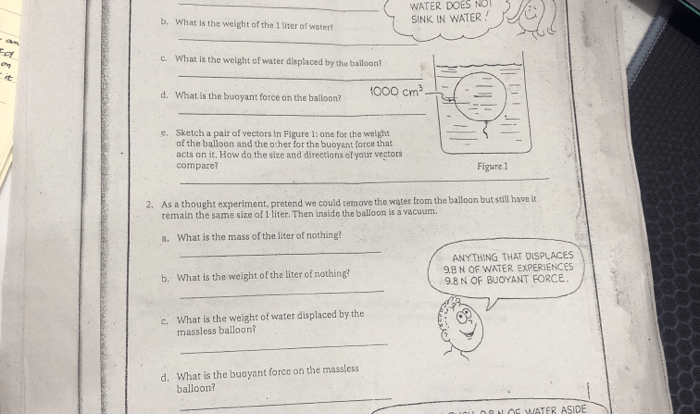Embark on an educational journey with our comprehensive calculating net force worksheet with answers. This guide delves into the intricacies of net force, empowering you with the knowledge and skills to navigate real-world physics scenarios with confidence.
Through interactive exercises and detailed explanations, you’ll master the art of calculating net force, unravel the mysteries of different force types, and explore practical applications across diverse fields.
Calculating Net Force: Calculating Net Force Worksheet With Answers

Net force is a fundamental concept in physics that describes the overall force acting on an object. It is the vector sum of all forces applied to the object and determines the object’s acceleration.
Understanding net force is crucial for analyzing and predicting the motion of objects in various situations. It plays a significant role in fields such as mechanics, engineering, and sports.
Calculating Net Force, Calculating net force worksheet with answers
To calculate net force, vector addition is used. The following steps Artikel the procedure:
- Identify all forces acting on the object and their respective magnitudes and directions.
- Draw a vector diagram to represent each force as a vector with its tail at the object’s center of mass.
- Use the head-to-tail method to add the vectors graphically, starting with any two vectors.
- The vector that extends from the tail of the first vector to the head of the last vector represents the net force.
Types of Forces
There are various types of forces that can act on an object, each with its unique characteristics and equation:
| Force Type | Equation | Description |
|---|---|---|
| Gravitational Force | F = Gm1m2/r2 | Attractive force between two objects with mass |
| Frictional Force | F = μN | Resistance force between two surfaces in contact |
| Tension Force | F = T | Pulling force exerted by a rope or string |
| Normal Force | F = N | Perpendicular force exerted by a surface on an object in contact |
Free Body Diagrams
Free body diagrams are graphical representations that show all forces acting on an object in a specific situation. They are essential for visualizing and analyzing net force:
- Draw the object as a dot or a box.
- Identify and label all forces acting on the object with vectors.
- Ensure that the vectors are drawn to scale and in the correct directions.
Applications of Net Force
Net force calculations have practical applications in various fields:
- Engineering:Designing structures, bridges, and vehicles to withstand external forces
- Mechanics:Analyzing motion, acceleration, and equilibrium of objects
- Sports:Calculating forces involved in sports activities, such as shot put and javelin throw
Common Mistakes and Misconceptions
- Neglecting the direction of forces:Net force is a vector quantity, so both magnitude and direction must be considered.
- Confusing mass and weight:Mass is a measure of an object’s inertia, while weight is the force exerted on an object due to gravity.
- Assuming that friction is always present:Friction is a contact force that only occurs when two surfaces are in contact.
Quick FAQs
What is net force?
Net force is the resultant force acting on an object when all the forces acting on it are combined.
How do I calculate net force?
To calculate net force, add all the forces acting on an object vectorially.
What are the different types of forces?
Common types of forces include gravitational force, frictional force, tension force, and normal force.
